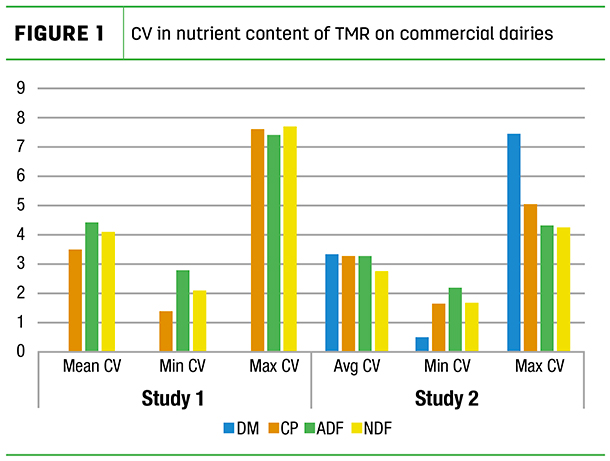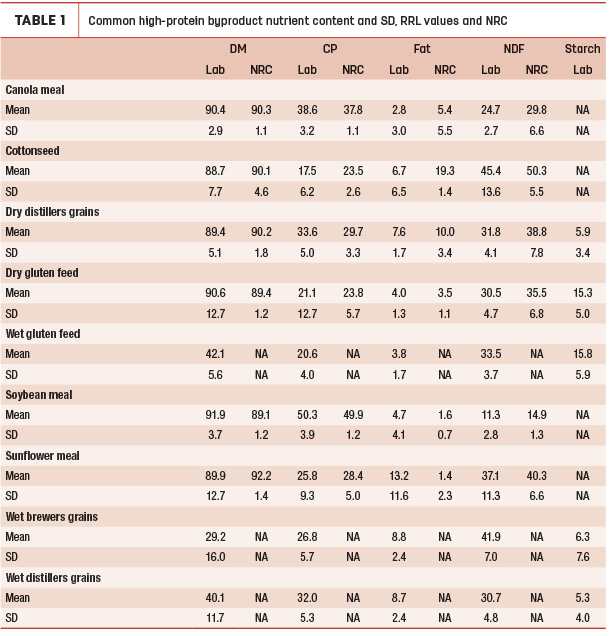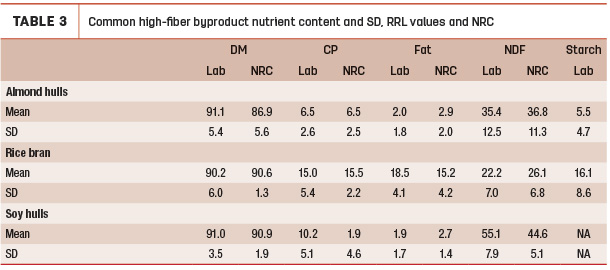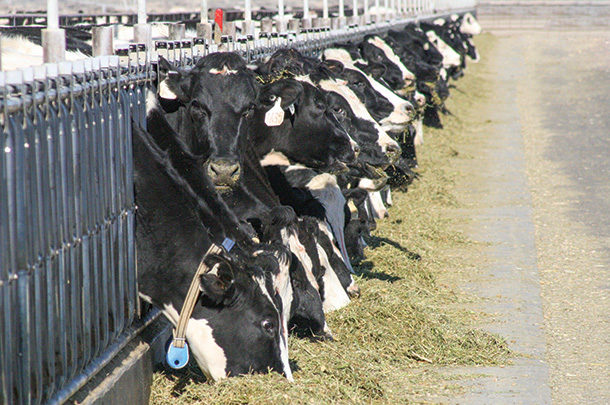Although upcycling may be a trendy word that do-it-yourselfers (DIY) have popularized in the last few years, cows have had this art mastered for centuries.
I tend to be a bit of a DIYer myself. Renovating old furniture is my preferred weekend project. Giving new purpose to old items comes with a great sense of accomplishment and allows me to fill my house with quality hardwood furniture at a fraction of the price. Similarly, byproducts implemented in the ration decrease food waste and allow farms to utilize nutrient-dense feeds. Dairy cattle can utilize leftovers from a multitude of manufacturing processes and turn them into high-quality protein. These byproducts can provide an economical source of crude protein (CP), carbohydrates and other nutrients. Byproducts are nothing new; we have been utilizing them in rations for decades. However, the nutrient content of some have changed more than others over time. Just like digging into a new restoration project, when we better understand the details of the product we are working with, we know how to best treat the feed in the ration.
When a new byproduct suddenly becomes available, we are often eager to take advantage of a good deal. Just as my Saturday mornings often start with the phrase, “Let’s go pick up a new piece of furniture today – it’s a really good deal.” Careful consideration helps to ensure the deal is as good as it seems. Cost per ton is commonly one of the first things looked at when bringing an ingredient into the ration. However, purpose in the ration is also a key factor. What is this feed going to add or displace? Is a CP source needed or will this feed contribute more to metabolizable energy?
The natural next step is to see if the addition of the feed will help to decrease overall ration cost. Typically, when implementing a new byproduct, feed library values are the easiest way to estimate its economical and nutritional impact. However, because many byproducts are subject to nutrient and dry matter (DM) variation, this can lead us astray in deciding whether to purchase the feed. Understanding variation in feed can help us make more-informed decisions about the best way to proceed. Although we may often consider the variation of the primary nutrient we are seeking to supplement, looking at secondary nutrients – which can have positive or even negative impacts on production – is also a critical step to ensure success.
DM variation
DM is a commonly overlooked nutrient that has a huge impact on the value of feed. Recent work has exposed that the DM in feeds we commonly consider as being consistent can also be subject to meaningful changes. Knowing and accounting for these changes in DM allows us to take advantage of potential cost savings or account for nutrient shortages caused by these swings. To illustrate how these changes can impact feed value, we can look at the mean and standard deviation (SD) DM of common byproduct samples tested at laboratories over the past five years. Figure 1 shows how increasing or decreasing one SD has an impact on the DM price of common ingredients. Typically, for a normal distribution, 67% of samples tested will fall within a plus or minus one SD range.

Protein
Protein byproducts are produced by a multitude of different crops: soybeans, canola, cottonseed and corn being just a few. When oils, starches or lint are removed from these seeds, what’s left is a condensed protein source. The amount of fat is important to monitor in these feeds, as it can be an underlying contributor to rumen unsaturated fatty acid load (RUFAL).
As manufacturing processes have gotten more efficacious, we see less fat in byproducts, however, there can still be substantial variation. Table 1 highlights how much variation can be seen in fat and CP content in common byproducts, as well as how they compare to National Research Council book values. The economic value of this variation is especially significant with increasing feed prices. For example, the SD of the CP in soybean meal across all samples analyzed over the past five years is 3.92. For a ration containing 4 pounds of soybean meal, this equates to a difference of 0.15 pounds of CP or about seven cents. Knowing the true value of feed nutrients allows farms to take advantage of higher values when present or to compensate for lower values – making sure cows aren’t deficient in important nutrients.

Energy
Several common byproducts can contribute a large amount of energy to the ration. Byproducts that contribute protein, such as wet or dry corn gluten feed, can also contribute a measurable amount of starch. Starch in corn gluten feed averages 15% but ranges from 10%-20% and has a slightly larger range in wet gluten feed, when compared to dry. Like the variation in CP seen in soybean meal, the starch variability in gluten feed can have a wide impact on ration economics. When looking across all gluten feed samples tested at laboratories over the last five years, one SD in 4 pounds of corn gluten feed equates to 0.2 pounds of starch (Table 2).

Fiber
In years like this when drought is prevalent over large areas of the U.S., some byproducts can be implemented to help stretch forage when it is not an economical option or not available. High-fiber byproducts implemented in correct balance can help the bottom line. Residing in the southwestern U.S. for the past six years has helped me to see the importance of these feeds for a dairy operation. They can carry secondary nutrients that provide extra energy and protein, which can help offset other higher-cost feeds (Table 3).

Several other considerations are important in deciding if a certain byproduct would be a good fit in the ration. Wet byproduct feeds often must be used up quickly to prevent spoilage and development of harmful molds and yeasts. Making sure that usage rate is sufficient, especially in summer months, is a key factor. Appropriate storage where feed can be kept clean and dry is also critical to ensuring the best value in these feeds. Although these feeds can be a great source of fiber, physically effective fiber in forages still plays a critical role in rumen health and must be included in the ration. Defining your needs on farm and clearly defining a new feedstuff can help to ensure implementation success when considering byproducts in a ration.








